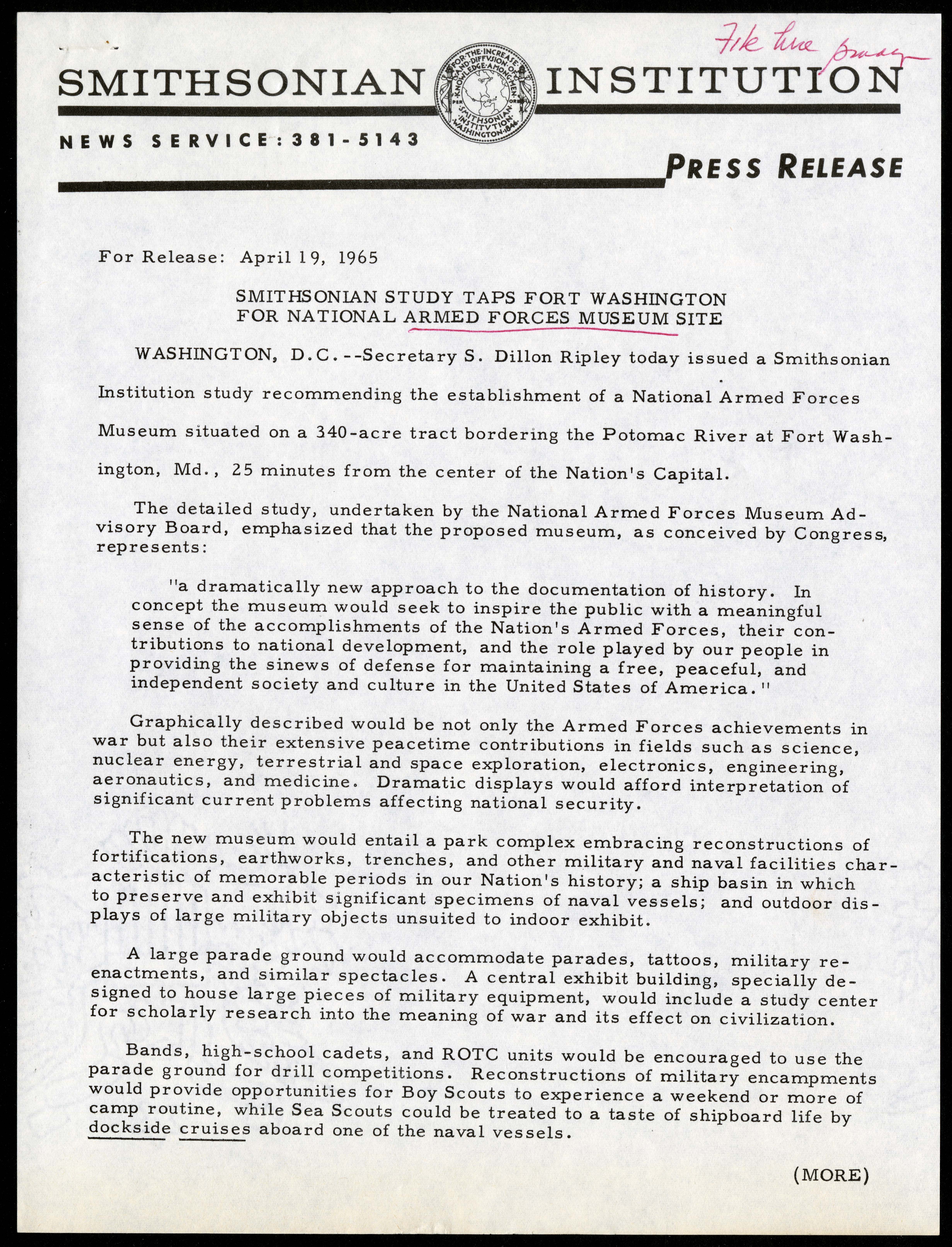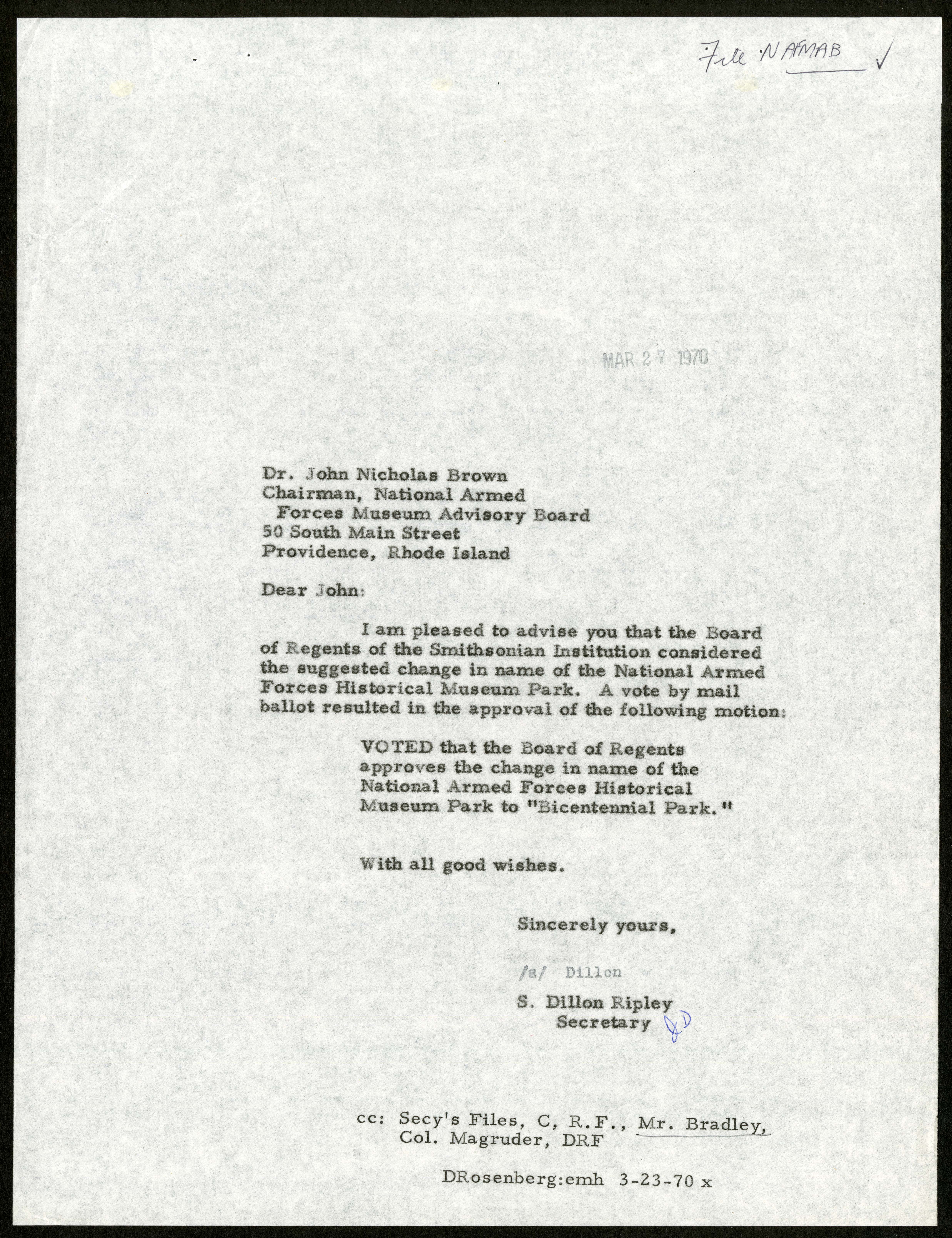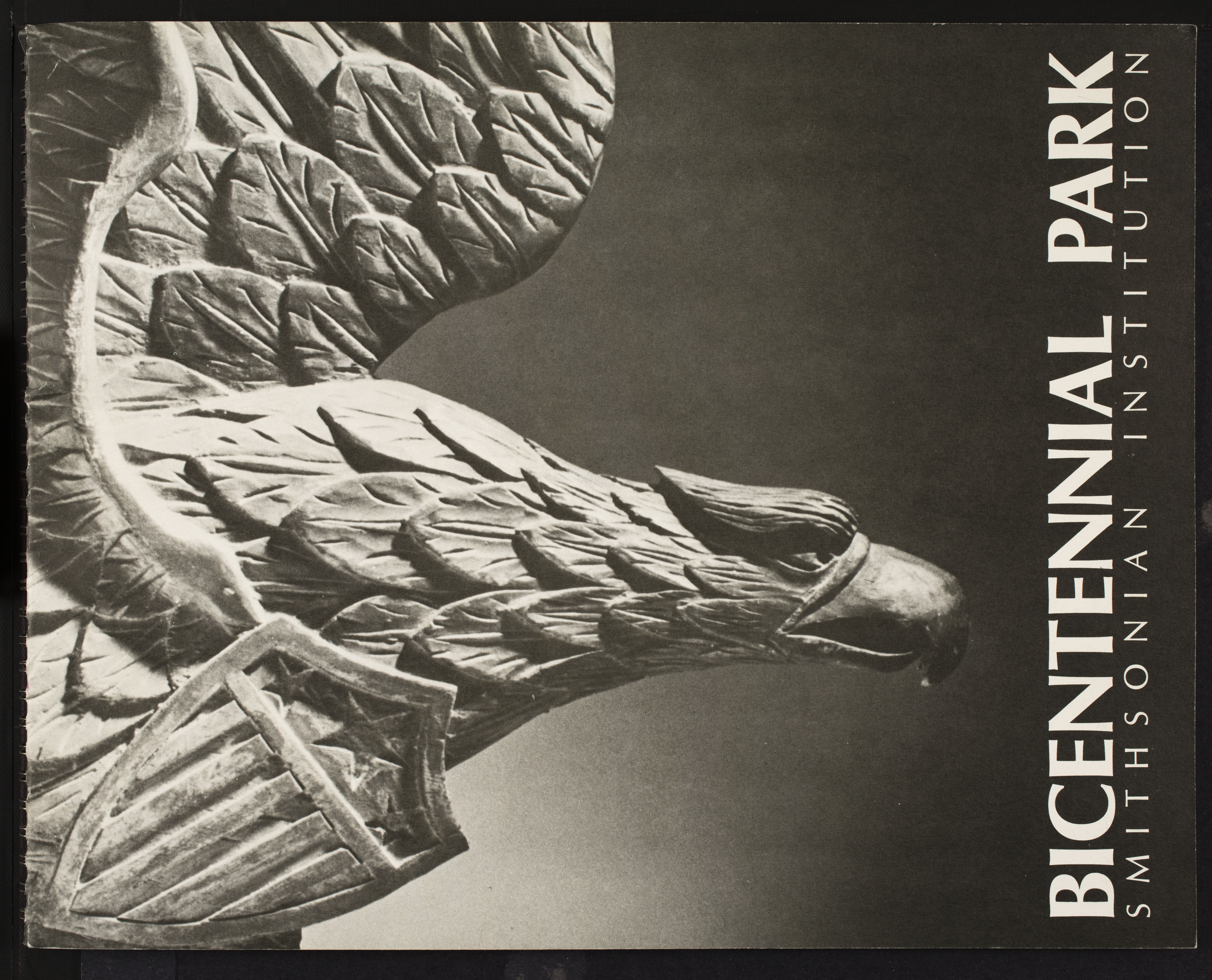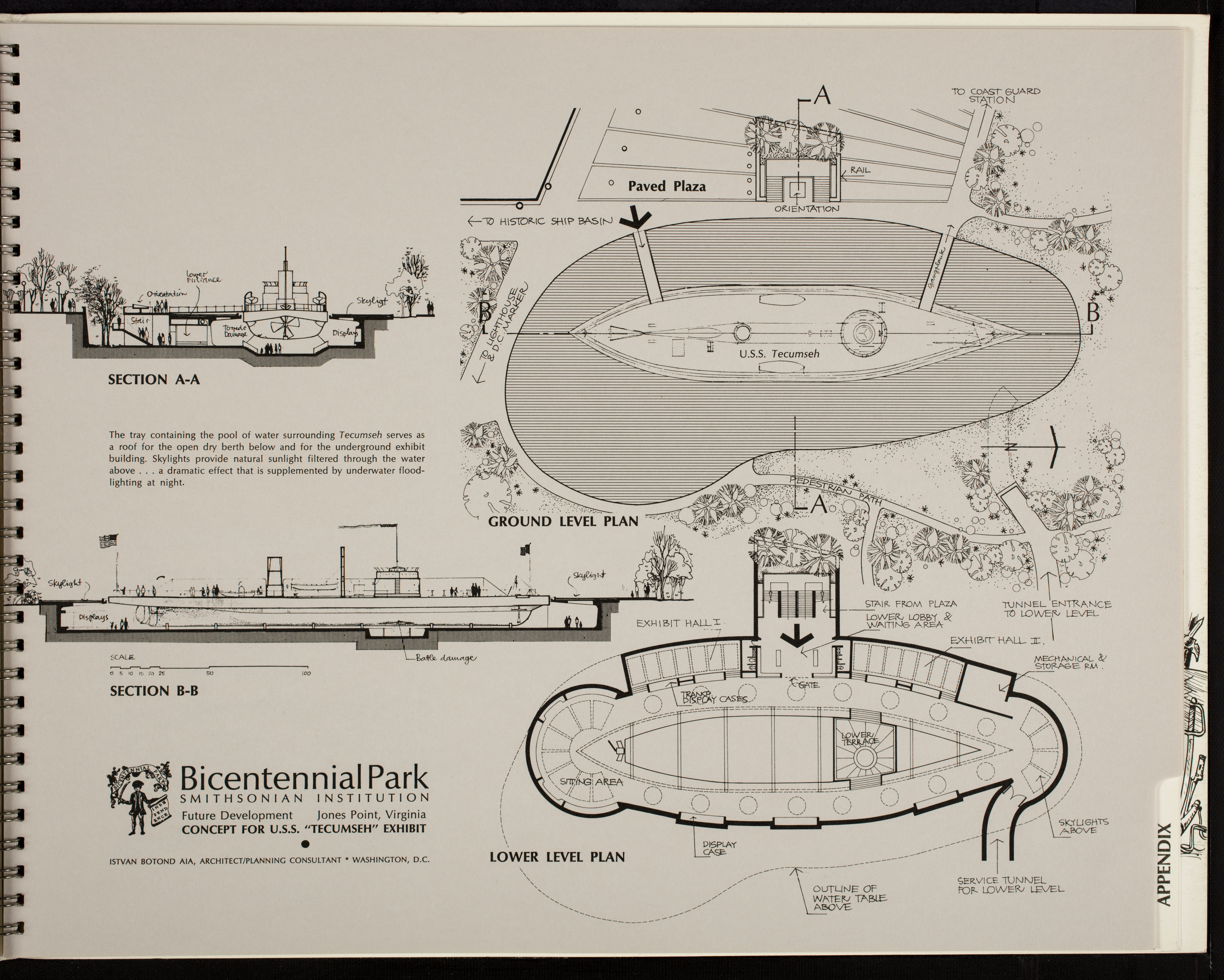Last year, in the course of rehousing a collection alongside our then-intern Heather Weiss (now an aide in our Digital Services division), I came across a fascinating brochure for something I’d never heard of: Bicentennial Park, a combination Smithsonian museum and national park, planned to coincide with the two hundredth anniversary of the United States. The booklet details plans for two parcels of land, one in Alexandria and the other in Prince George’s County, connected by riverboat service, featuring recreated Revolutionary War encampments, a research institute, and other attractions. So why was this project never brought to fruition?
The answer lies in the park’s beginnings.
The Bicentennial Park was originally conceived as a national museum of the armed forces, given the working name of the National Armed Forces Historical Museum Park. Under President Truman in 1946 and then President Eisenhower in 1958, the concept was developed as an opportunity to present “the role of the armed forces in creating, developing, and maintaining the United States as a free, independent, and prosperous nation,” with attention given to conflicts as well as military peacetime contributions to fields such as medicine and engineering. Eisenhower convened a presidential committee to further the project, chaired by Chief Justice of the Supreme Court Earl Warren, which added to the concept a research institute focusing on military history. Public Law 87-186, passed August 30, 1961, provided for the establishment of an advisory board to work with the Smithsonian to create an armed forces museum and to survey and select an appropriate site. In addition to displays of military ordnance and paraphernalia from various periods and struggles, the museum park was planned to “incorporate numerous outdoor exhibits relating to significant periods of American history, including a ship basin in which to preserve and exhibit historic naval vessels.” (This last highlight ultimately proved a nonstarter and source of controversy, as the intended salvage of the sunk USS Tecumseh for a museum centerpiece never got off the ground and culminated in a lawsuit against the Smithsonian.)
Can We Build It Here?
Simply finding a site for the museum park proved difficult. The advisory board recommended Fort Washington, opposite Mount Vernon on the Maryland side of the Potomac, held by the National Park Service, who countered with Fort Foote closer to the District. Fort Foote had been rejected due to a proposed scenic parkway that would have bisected the site, but ultimately the board was persuaded to choose Fort Foote with the promise that the parkway would be relocated. (A previous proposal had seen land privately offered to the Smithsonian, situated between Quantico and Fredericksburg, Virginia, but was likely deemed too far from Washington to be a viable choice.) In January 1967, this choice was approved by the National Capital Planning Commission, though continuing difficulty in acquiring the full complement of necessary acreage resulted in making plans to use both the land around Fort Foote and additional government-held land at Jones Point, on the southernmost tip of Alexandria.
A Polarizing Concept
Given the political climate of the period as a result of the highly unpopular Vietnam War, it is not at all surprising that a museum or national park associated with the military should generate discussion. Mrs. T.C. Ishee (October 2, 1966) wrote to the Sunday Star, calling the proposed museum park a “Temple to the Gods of War,” and asserting that American soldiers then in Vietnam and in previous wars “paid the supreme price so that the very word ‘war’ might become … no more than a nightmare from a barbarous past.” Why, then, she asks, a museum centered on such an offensive theme? In contrast, F.B. Nihart of McLean, Virginia, wrote to the Washington Post (October 31, 1966) in support of the museum park, stating that “the museum will commemorate and honor the heroism, hardships, and sacrifices of each generation of Americans”; that rather than glorifying armed conflict, the recreation of World War I trenches or D-Day bulkheads would demonstrate “the grim but often necessary reality of war.” An internal Smithsonian memorandum acknowledged the difficulty of making progress on the museum park “in the midst of the most unpopular of all wars.”
Redirecting Focus to the Bicentennial
While it is not certain that controversy or criticism carried the day, in December 1969 the chairman of the advisory board, John Nicholas Brown, wrote to Chief Justice Warren suggesting that the museum park be renamed in keeping with the upcoming Bicentennial celebrations—and heavily reworked to fit the theme. Presented as the Bicentennial Park to the American Revolution Bicentennial Commission, it was heartily recommended to the President as “a new Smithsonian undertaking … where the life of the Revolutionary citizen soldier will be re-created.” Specific criticisms of the previous incarnation were refuted, stating that the theme of the museum park would not be war, but rather “the diligence, sacrifice, and courage of the American people against a background of authentic settings.” A detailed brochure was prepared, with maps and diagrams outlining the experience a visitor would enjoy. (You can see the whole brochure here.)
Ultimately, in the face of concerns over its suitability, and seen as a lower priority than other Bicentennial-associated plans—as well as the nascent National Air and Space Museum, to which Congress had already promised substantial funding—all plans for the Bicentennial Park came to a halt. Though we may never know exactly how the museum park would have turned out or what its reception would have been, this brochure gives a tantalizing glimpse into a national park that never was.
Related Resources
Record Unit 137, Smithsonian Institution Office of the Under Secretary, Records, 1958-1973, Smithsonian Institution Archives
100 Years: Let's celebrate!, The National Parks Service
Produced by the Smithsonian Institution Archives. For copyright questions, please see the Terms of Use.






Leave a Comment